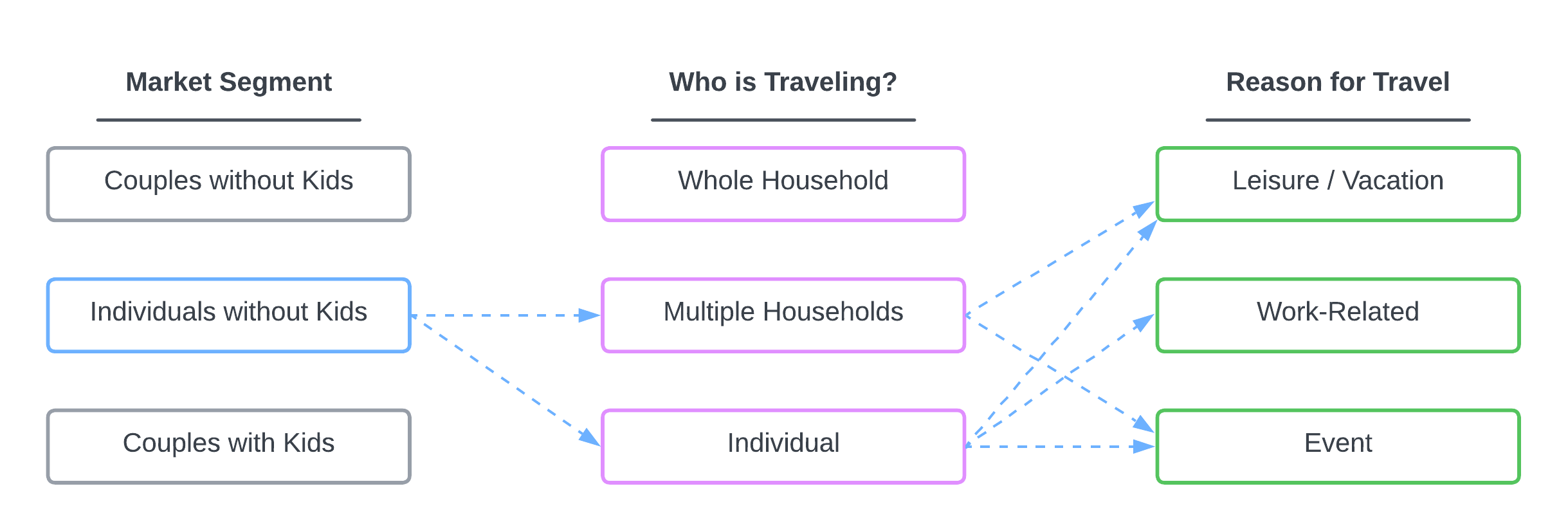How to Beat any Short Term Rental Market
There’s no denying it - the short term rental market is fiercely competitive
As a vacation rental owner, I'm constantly asked where the best investment opportunities lie. With market saturation reaching all-time highs, it's a question that demands a thoughtful answer. While some markets might seem too crowded, I believe that with the right strategy, you can succeed in almost any location. A few markets might be off-limits due to a lack of differentiation potential, but for the vast majority, oversaturation simply means you need to get strategic. In this post, I'll share my tips for thriving in any competitive market.
Research from AirDNA’s 2024 Outlook report highlights the challenges ahead. Listings are expected to surge by 200K homes, and while demand is projected to increase by 10.7%, average occupancy rates may remain stagnant. This paints a competitive picture, but does it mean buying a vacation home is no longer a profitable venture?
Let’s dive in.
Historically, there's been a misconception: buy a vacation rental, and the bookings will magically appear. While you might attract some guests, there's no guarantee you'll get enough bookings or that those guests will have a memorable experience. So, how do you create a profitable rental that stands out, consistently attracts your ideal guests, and creates an exceptional experience? The answer lies in market differentiation, exceptional management, and targeted marketing.
Step 1: Define your Target Market
Market segmentation is the process of dividing potential guests into groups based on shared needs and how they respond to marketing. To truly understand these segments, let's examine the makeup of US households using data from the latest census.
Key Insights from the Data:
Married & cohabiting couples without children make up the single largest segment of households at 42.3 million
Individuals living alone are the next most significant segment at 35 million.
Households with children comprise 33.8 million of the market
The census data also shows that the average number of children per household is right around 2
Going further, we can infer common reasons why these groups might travel and their likely travel companions. The diagram below illustrates scenarios where short-term rentals offer ideal solutions. Each scenario presents a unique opportunity for short-term rental owners to provide a curated experience.
Here’s are some common examples:
Step 2: Find the Perfect Property
Now that you understand your target market, it's time to translate their needs into the ideal property. By combining your market segment analysis with location and property considerations, you'll create a clear vision for your short-term rental investment.
So, what type of property and where? Let's use an example to illustrate the process:
Target Market: Families with young children, traveling with multiple households for vacation. (These households might include grandparents, siblings and their families, or friends with similar-aged children.)
Ideal Locations: Mountains & Beach (When it comes to identifying a specific city or area to purchase in, focus on areas that you know your target market segment is looking to visit.)
Home Size: Minimum 4 bedrooms (including 1 bunkroom, 3 king rooms), and at least 3 full bathrooms (ideally 1 per family).
Home Type: House, Townhouse, Condo
Home Features:
Bonus/spare room for flexibility
Dedicated adult relaxation space (e.g., patio/porch), separate from kids areas
Playroom or designated kids' space
Backyard is a major advantage
Water view is highly desirable (lake, river, ocean)
Proximity to kid-friendly activities, restaurants, and outdoor attractions
Pool would be a significant bonus
Important Note: These property goals, combined with your financing requirements, will give you the necessary framework to find your perfect short-term rental investment. Market analysis tools, such as AirDNA or Mashvisor, can help to provide great baselines on average performance in certain locations.
Step 3: Design, Furnish & Market your Property
Why is market differentiation so crucial? Because guests have diverse needs and expectations for their rental home.
Curating a property for a specific market segment not only sets you apart in a crowded market but also guarantees a fantastic guest experience, as the home is tailored to their desires. This translates into glowing reviews, word-of-mouth recommendations, returning guests, and increased direct booking opportunities.
When designing, furnishing, and decorating, always prioritize your target market. Every detail matters – from the baby bath seat for traveling families to the fish cleaning table for angling enthusiasts.
But won't focusing on a specific market limit your potential guests? Absolutely – and that's the whole idea! By selecting a sizable market segment, you'll still have ample opportunities for success. Our rental homes cater exclusively to families with young children. We know we'll achieve optimal results and guest satisfaction by focusing on this niche. Since this market segment is large, there's no worry about missing out on other potential renters.
To pinpoint the goals for each space and identify potential pain points, create an idea board for every room. I've even designed a free Google Slides template to help you get started!
Lastly, make sure your rental listing includes information and photos about all of the elements that make it a great rental for your target market segment. It should be super clear to prospective renters that fall within your ideal market segment, why your rental home is the perfect home for their stay.
Bringing it all together
To summarize, understanding your ideal guest – who they are, their travel motivations, and what they seek in a rental – is key to designing a home that creates exceptional experiences and sets you apart from the competition. This strategy enabled us to achieve close to double the median annual revenue for rental homes in our area (according to AirDNA).
Questions? Leave a comment below!






